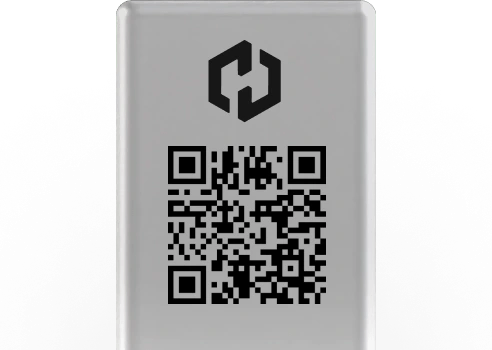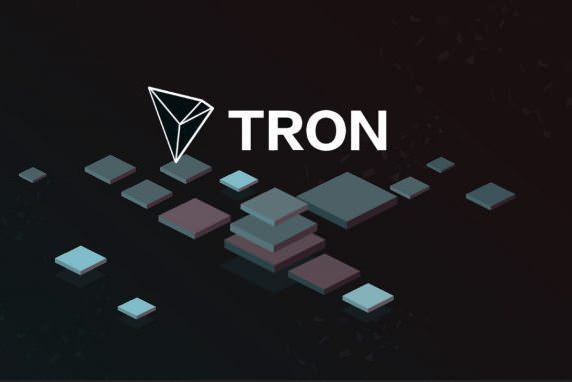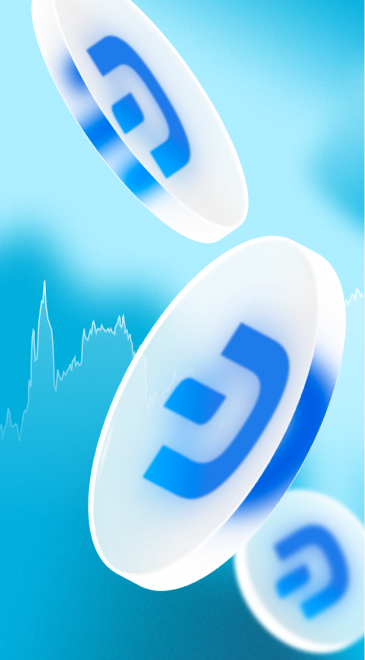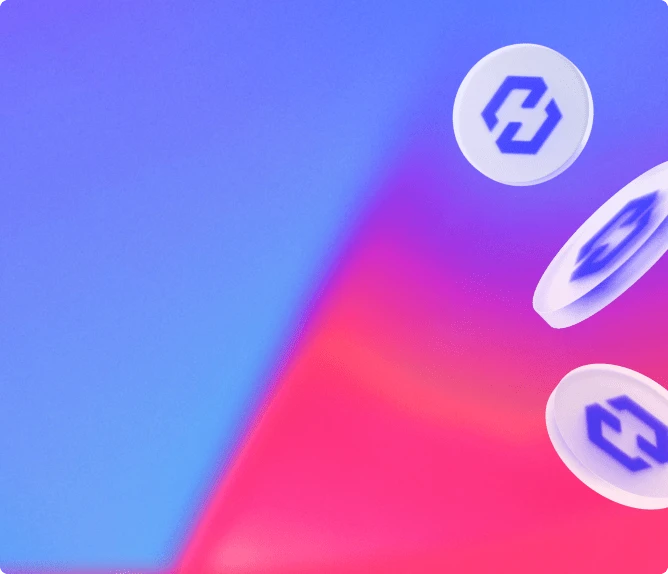In the Blockchain world, Tezos is a project that, for better or worse, got a hell lot of attention. Tezos is the product of many years of crypto-economic and philosophical reflections led by its masterminds Arthur and Kathleen Breitman, and who laid them out in their 2014 White Paper.
Previously, Arthur Breitman was a research engineer for Google X and Waymo. In his early career, he worked as a quantitative analyst for Goldman Sachs and Morgan Stanley. Arthur graduated from the École Polytechnique and the Courant Institute of NYU where he studied applied mathematics.
His wife and partner Kathleen Breitman is also a graduate of New York University. She previously worked as a Strategy Associate at R3 CEV and at Accenture, and as Management Associate at Bridgewater Associates. They are assisted by a team of developers as well as board members Ryan Jesperson, Lars Haussmann, Michel Mauny, Olaf Carlson-Wee, Pascal Cléré, Marylène Micheloud and Hubertus Thonhauser. More on their accomplishments here and here.
Andrew Miller, Emin Gün Sirer and Zooko Wilcox are advisors to the project. At a very early stage, the Breitmans were able to attract pioneers of the crypto world like Tim Draper and board member Olaf Carlson-Wee among others, who bought into their vision of a brand new decentralized, self-regulated and security-focused smart-contract platform. The combination of the vision, the team and the ecosystem allowed Tezos to raise 232M$ in an uncapped ICO in 2017, the biggest crypto-fundraiser at the time and much more than what they had expected at first.
However, things quickly turned into a nightmare as “real life” governance issues started to arise, leading to a lock-up of ICO funds by the Swiss foundation that was supposed to manage them. These obstacles created ICO participant disappointment, class action lawsuits and delays in development and the product launch date.
One year after the ICO finished, it seems that Tezos has dealt with most of its issues and is now ready to deliver. We thought this would be a good moment to understand what the project is all about and where it comes from.
Let’s dive into the story and the tech.
Tezos, the gigantic ICO, then the problems
The Tezos ICO was a bit different from others, in the sense that the team made several design choices that were questioned by the community and made it a different kind of investment compared to flip-a-coin-for-profits ICO types that were mostly the norm back then.
First of all, the ICO was active for 2000 bitcoin blocks – or a bit less than two weeks – which was considered a very long time considering many projects were raising tens of millions of dollars in less than a minute. It was also uncapped, meaning there was no limit to the amount they could raise. Also, no ERC-20 token was to be issued before the network launched, which means that Tezos had to build a functional product before the network could go live, and thus investors would have to wait for an undetermined period of time to get their hands on the tokens.
According to the Tezos team, these decisions were intended to drive a more widespread distribution of tokens among investors by allowing more people to get in, distributing the wealth between many more individuals, as well as discouraging make-a-quick-profit investors in favor of tech-enthusiast investors who would help build up the community and the network.
History proved that the recipe was a winning one.
Tezos raised 65703 BTC and 361122 ETH, for a total value of 232M$ at the time. At today’s prices, that’s roughly 500M$. That is a lot of money, and the Tezos team had a plan for it: they would foster their ecosystem by committing 50M$ to venture capital investing in projects building on the tezos platform and hedge the risk on their war-chest by buying different types of traditional financial assets.
For the sake of transparency, the Breitmans decided to rely on a Swiss foundation to manage the funds. The goal of the Tezos foundation was to disburse funds in order to promote and develop the Tezos protocol and related technologies, as well as promoting and supporting applications using the Tezos protocol. As good as the picture looks, things didn’t go quite as planned. The Breitmans made some mistakes that were going to taint the whole project.
First of all, they totally excluded themselves from having any connection to the foundation other than a contractual one that put them in charge of developing the Tezos protocol from their company Dynamic Ledger Solutions. In the end, the deal was that the Foundation would own the Tezos source-code and trademark from the Breitmans’ company for 8.5% of the funds raised in the ICO, plus 10% of the tokens allocated in the genesis block. Furthermore, they put their trust in the wrong individual as the President of the Foundation. Johann Gevers had a good reputation within the community and his past experiences made him an ideal pick as President of the Foundation. The Foundation’s board even ended up giving him in single-signature access to the funds.
However, it turned out he had no interest in fostering the Tezos project. He tried to link his own companies to the project to promote them, he hired people linked to him, and changed his status to “Executive Director” in order to pay himself a substantially higher salary than what he could have made as President of the Foundation.
In light of these problems, the Tezos community even started building their own Foundation called the T2 Foundation with Ryan Jesperson as leader and which was supported by prominent individuals like Olaf Carlson-Wee. The goal was to launch the network even “if the Tezos Foundation is not able to do so adequately or in a timely manner.”
When the Breitmans threatened to expose him and cancel the contract they had with the foundation, Gevers shut off the money tap. The delays in project development and the fact that investors couldn’t see the end of it (and didn’t even have an ERC-20 token to sell their positions) led them to begin questioning the project and several class action lawsuits were started.
The T2 Foundation entered in partnership with the Breitmans, allowing them to pay developers with their own money for several months to keep the project running. In the end, after lots of hassle and drama, Ryan Jesperson and Johann Gevers met in-person and Gevers agreed to step down from the Foundation. This marked the end of this ironic governance situation, which was unexpected from a self-governing project…
What is Tezos?
Tezos’ main value proposition is “self-regulated” governance within the protocol itself.
The founders of Tezos believe that a truly decentralized system must be decentralized at all levels: not only in the way it discovers blocks, broadcasts transactions, validates transactions, and reaches consensus on the same single chain, but each decision-making process must also be decentralized, as must the proposals to amend the protocol.
Let’s compare the amendment system of Ethereum with that of Tezos.For Ethereum, in order for a protocol improvement to be implemented, the following process is implemented:
- A “Ethereum Improvement Proposal” is submitted on https://github.com/ethereum/EIPs
- The developers discuss the proposals during open interviews https://github.com/ethereum/pm/tree/master/All%20Core%20Devs%20Meetings
- If the proposal is to be implemented, the developers agree on an activation date. The block number at which the new version of the protocol will be implemented is communicated to the community, allowing network nodes to update the version they are using.
Now, let’s see what Tezos has to offer. The protocol changes are organised in “election cycles” lasting 262,144 blocks, or about 6 months. Each cycle is divided into four periods:
- During the first period, amendment proposals are suggested to the network. The creators of the amendments have the possibility to add an “invoice” to their proposal and thus choose the reward they will receive if their proposal is eventually implemented. Token holders can approve or disapprove as many proposals as they wish during this period.
- Only the proposal that receives the most approvals will proceed through the second period selection process. The selected proposal must obtain a super-majority of 80% of votes in favour. If it does not meet them, then the proposal is rejected.
- If accepted, the new version of the protocol is automatically implemented on the testnet. The protocol is thus intensively tested during this phase and a new vote requiring a super-majority of 80% is conducted.
- This period is an extension of Phase 3. A similar confirmation vote is held once again. If it is validated, the new protocol is automatically implemented in the first block of the new cycle.
Of course, the conditions described above can totally change via these same amendments. 80% is considered a very conservative figure, and more complex conditions for the selection of protocol amendments will most certainly be implemented in the future.
It is important to note that a minimum of 8,000 XTZ (or 1 roll) is required in order to be able to vote. 1 roll = 8 000 XTZ = one voting right = one baking right. For those holding less than 8,000 XTZ, they can delegate their voting rights to any person of their choice.
That said, the effectiveness of the blockchain governance model remains an open question. Tezos is one of the first experiments of such a system.
The second important feature of Tezos is that the protocol is implemented from day one with a Delegated Proof-of-Stake consensus mechanism, called Liquid Proof-of-Stake.
What does it mean?
In Bitcoin or Ethereum, a Proof-of-Work consensus mechanism is used, whereby miners dedicate computing power to find a valid hash that will allow them to add their block of transactions to the blockchain and recover the reward and transaction costs associated with that block. This process consumes a lot of energy today, but is recognized as the safest mechanism, with Bitcoin using it with great success for almost ten years now. Here, decentralization emerges through the incentives that people or companies have to recover rewards and therefore to be an integral part of block validation operations that secure the network.
Another consensus mechanism that has been implemented by Peercoin (PoW+PoW) first and then by NXT (100% PoS) is the Proof-of-Stake. Instead of putting each minor in competition to find a valid hash, a minor is pre-selected to mine a certain block in the future. In order to ensure that he does not cheat or be dishonest, he will have to sequester a number of his tokens before he even adds his blocks to the blockchain. If he tries to fool the network, he’ll lose his funds in escrow. This means that the energy required to operate the network is minimal because there is no excess energy expenditure. However, this system does not work in favor of small token holders, who do not have sufficient resources to be sequestered to have the right to participate in the block generation system and therefore remuneration.
We are now seeing the emergence of Delegated Proof-of-Stake, which includes Tezos’ Liquid Proof.
Tezos uses the term baker for miners and baking for mining operations.
How it works
- Baking activities are organized in cycles of 4096 blocks (about 3 weeks). At each cycle, baking rights are assigned to a list of potential bakers for each block. Token holders have the right to put their tokens into escrow to validate the blocks and add them to the blockchain, but a minimum of one roll (8,000 XTZ) is required to be selected. Being a network node is also necessary.
- Small holders can delegate their tokens to the baker of their choice who will use the baking rights of their tokens for a percentage of the reward.
- Two different types of addresses exist in Tezos: management addresses that have an XTZ spending right, and delegation addresses that are derived from them, whose funds are controlled by the management address but baking and voting rights can be delegated to a delegation service. An interesting feature of this system is the possibility to participate in the consensus/awards mechanism while keeping your funds in cold storage, via a Nano S LEDger.
Bakers and Endorsers
While bakers undermine blocks, endorsers are responsible for ensuring the legitimacy of blocks by signing the blocks for which they are responsible.
- Bakers must sequester a minimum of 512 XTZs/per block. If they behave dishonestly (for example, an attempt at double spending), they will lose this escrow. This mechanism ensures network security.
- The Endorsers are sequestering 16 XTZs. There are 32 Endorsers per block.
- The reward per block is 16 XTZ for the Bakers and 2 XTZ for each Endorser.
- The maximum reward per block is currently 80 XTZ.
Economic characteristics
With the first version of the protocol, an inflation of 5.5% is implemented. Indeed, at 80 XTZ per block and one minute per block, we have 80 x 60 mins x 24 hours x 365 days of XTZ created per year (=42M). In addition, when the betanet was launched, 763M of XTZ was present (launch of the genesis block). 42M / 763 M 5.51%.
If 100% of the tokens participated in the baking process, then each token holder would receive 5.5% more tokens over a year. In practice, tokens can be distributed at each cycle: every 3 days. However, it is unlikely that 100% will participate in baking activities (although today 98% of activated tokens do), which means that the reward will probably be higher per participant than 5.5% (Around 13% today – 28 July 2018).
This 5.5% inflation will apply to rewards as well. A decrease in inflation is therefore not foreseen in the first version of the protocol.
Security of smart contracts through formal verification.
The history of cryptocurrencies has shown us so far that if large amounts of valuable assets are held in a system, hackers will try to find, and eventually find, vulnerabilities that will allow them to get their hands on these values.
In order to anticipate errors in smart contracts, the team behind Tezos decided to build its protocol in Ocaml, a language focused on security by facilitating formal verification operations, a technique used to mathematically prove the accuracy of computer programs.
Smart contracts are written in Michelson, a complete Turing language developed by the Tezos team that makes it easier to check the accuracy of smart contracts.
Of course, this is not an exhaustive solution for contract security, and the first criticisms against this choice are that Ocaml is a language unknown to the general public and that Michelson is not very accessible to the common developer. However, the Ocaml Pro team, in partnership with the Tezos Foundation, has developed the Liquidity language that compiles directly into Michelson, which makes it much easier to use, with a faster learning curve. Ocaml is also becoming more popular with companies like Facebook and Bloomberg who use it for some of their critical operations. Click here for a quick overview of Ocaml’s features.
This does not mean that it is impossible to create languages that facilitate formal verification on other smart contract platforms. For example, Ethereum developers are currently developing tools for this purpose.
About self-regulatory governance protocols
Within a delegated Proof of Stake and self-regulated governance mechanism, token distributions matter.
Interesting figures have been published by the Tezos Foundation:
- 30,317 portfolios were funded from 607,489,040.89 XTZ during the ICO
- 3 156 502.85 XTZ were given to early adopters and partners.
- 76 330 692.97 XTZ were created for the Tezos Foundation
- 76 330 692.97 XTZ were created for Dynamic Ledger Solutions. These are currently held by the Tezos Foundation and will be handed over to DLS as key steps are completed.
The Gini coefficient, which is used to determine the distribution of wealth, is 0.878. (1 corresponds to a single entity that holds all the wealth, 0 corresponds to an equal distribution between all entities). By way of comparison, the Gini coefficient of Ethereum’s ICO was 0.832, that of wealth in the world is 0.804 and that of the USA is 0.801.
To illustrate this figure, 90% of the xtz were held by 20% of the addresses at the ICO, and 156 addresses held 50% of the funds.
Why is this important when we are talking about a protocol capable of self-regulation via tokens that give voting rights?
The first point is that the Foundation and DLS will have a relatively high level of control over the proposed amendments by holding more than 20% of the tokens between them. This can be seen as a good thing because the very mission of these entities is to promote and improve the protocol. It also means that the remaining 80% is not distributed very equitably, which can lead to an accumulation of power.
This is a major concern. Vlad Zamfir, the lead developer of the Casper Heads Up Proof mechanism for Ethereum, fears a “cartelization” and the advent of a plutocracy on Heads Up Proof systems.
As main beneficiaries, the economic incentive remains for important actors to have a successful protocol, but it is complicated to anticipate the direction the protocol will take in their power, and whether their decisions will not run counter to the interests of small token holders.
However, as we have seen before, small token holders can delegate their votes to the department of their choice and who represents their interests. It is very easy to change delegation services, hence the name “Liquid Proof-of-Stake”. A significant counterweight.
Launch of the Betanet
After a complicated year of project governance but successful in the protocol testing phases, Tezos launched its betanet, the last step before mainnet, on July 1, 2018. To date, on July 28, 2018, the betanet is running smoothly, a reassuring first month when compared to the more tumultuous launch of EOS.
On the other hand, a controversial and last-minute decision was taken by the Tezos Foundation, which imposed a KYC process on ICO participants so that they could regain access to their funds. Some see this as a preventive measure for future regulations, and others as an action that goes against the philosophy of cryptoassets.
Another last-minute decision was to cancel a veto right that the Foundation had agreed on the approval of the amendments in the first year. This seems to be related to the SEC’s recent announcement that emphasizes decentralization as a key metric to judge whether a cryptographic asset can be considered as a security and subject to stronger regulations.
It will be interesting to see how the first smart contracts behave on Tezos, while we are still waiting for the simple possibility to create them at Cardano, its closest competitor. As for Ethereum, the two architectures seem far enough apart to attract different types of projects. Only the future will tell us.





























